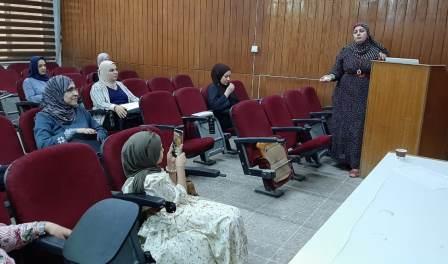The department of biology, in collaboration with the continuing education unit at the college of science, has organized a lecture entitled “The role of ticks in the transmission of VHFs” delivered by Batool Kazim Habib, in the presence of a number of students, researchers, medical and veterinary professionals. The aim of the lecture was to identify the classification ranks of ticks and its incubation period, which is the main carrier of the viral hemorrhagic fevers, which has spread recently, since ticks have an important role in the transmission of this virus and the common disease between humans and animals, caused by the bite of the tick infected with virus and being present on the skins of infected animals, as well as a contact with the blood of infected animals and their tissues immediately after slaughter or even exposure to blood and tissues of the infected person.
The lecturer also highlighted the classification ranks of ticks, the clinical signs of rapid heartbeat, enlarged lymph nodes and the appearance of freckles (caused by subcutaneous bleeding) such on the mucous membrane in the mouth, throat and skin, indicating that the disease may develop into a Lyme disease called Bruises, in addition to other hemorrhagic phenomena including nosebleed and oral bleeding, revealing that there are usually signs of inflammation in Liver among patients with serious conditions who suffer from rapid deterioration of kidney functions, sudden liver or pulmonary failure after the fifth day of the disease.










